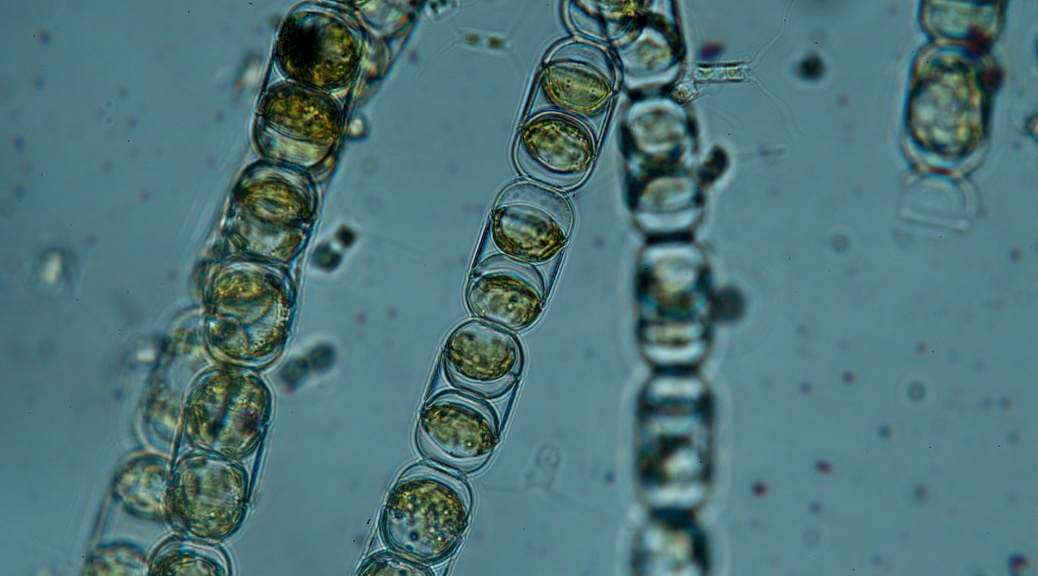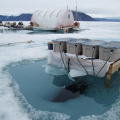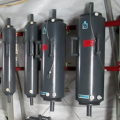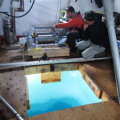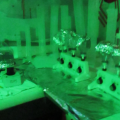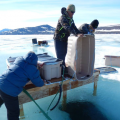In order to see how phytoplankton cells (primary producers) could live in a changing environment with increasing irradiance and possible nutrient replenishment, we decided to investigate how both increasing factors could impact cell growth as well as their pigment and taxonomic composition, and production. In order to do this we set-up incubators on the ice… and here is how we did it:
Step 1: Setting up the incubators and a platform. The platform was made by one of our guides: Jaypootie, and installed by himself and Eric Brossier. It needed to keep the incubators stable on the ice throughout the whole experiment. The incubators lids’ were attached to different filters in order to let different intensities of light through.
Step 2: Setting up the experiment. We needed to obtain water containing natural phytoplankton communities – It took quite a few niskins to fill up the 3 large coolers (3 x 20 L / cooler) with the help of Adriana Lopes dos Santos, Henry Bittig and José Lagunas-Morales.
Step 3: The water collected needed to be transferred into bags to be incubated. This process took Eric Brossier and Aurélie Delaforge quite some time inside a small dark tent. We had to measure the volume of water going inside each bag, add the nutrients when needed and make sure the water didn’t warm up so we had to be as quick as possible.
Step 4: Once all the bags were ready we then put them in the different incubators with the different light conditions… and the experiment began…
Overall the experiments lasted 19 days, throughout which the bags were sub-sampled. The water collected was then filtered in the dark in a cabin, where we only had green light to see in order to avoid any effects on the results.
Then on the 5th of July it was time to take it all down 😉

